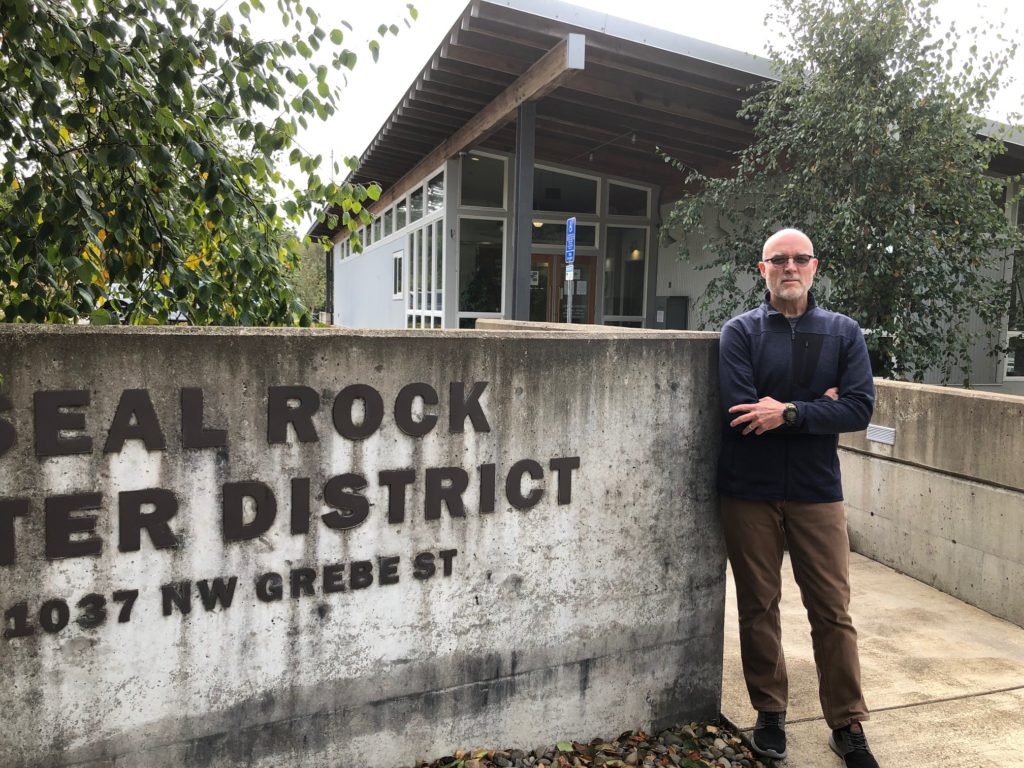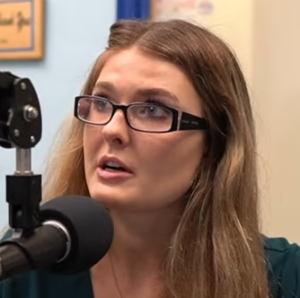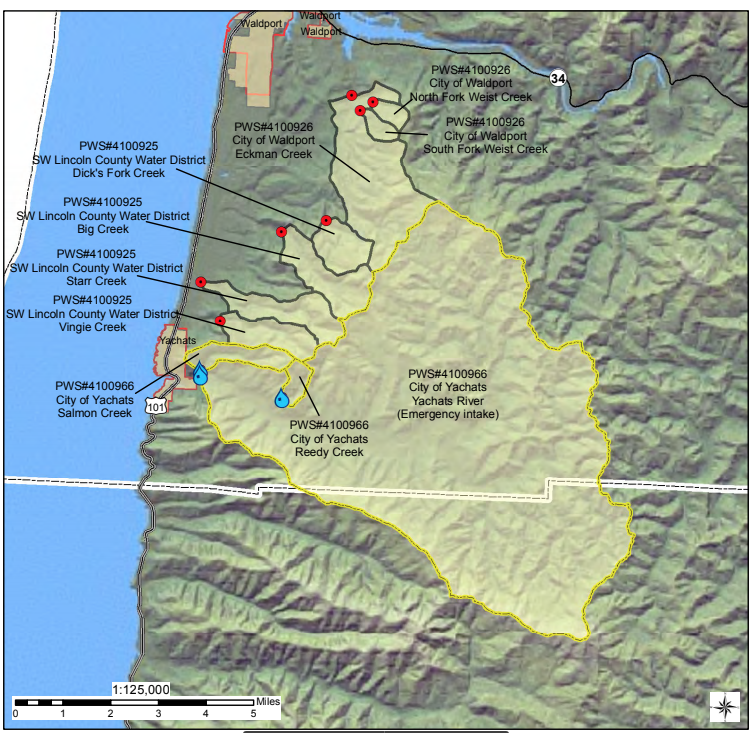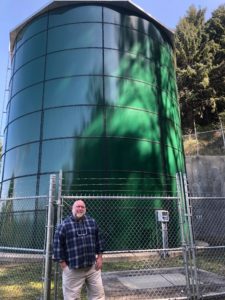
By DANA TIMS/YachatsNews.com
Adam Denlinger has spent the past 40 years helping provide customers and businesses with the water they need to survive and flourish.
Across those decades, he said, delivering water has largely been left to the 52 mid-coast providers, most very small, who operate from Yachats north to Lincoln City.
That changed this week as a consortium of cities, utilities, tribes, special districts and conservation organizations completed the draft of a plan addressing how the mid-Oregon coast will approach water uses for years to come.
The plan comes with $120 million worth of specifically targeted water use and conservation targets that administrators say will be implemented over 10 years or more.
“There is, in my opinion, no bigger deal than managing water in the mid-coast for future generations,” said Denlinger, general manager of the Seal Rock Water District. “This plan will help guide our efforts as water users to ensure that water is managed efficiently and appropriately on a really large scale.”
The group that produced the draft plan is the Mid-Coast Water Planning Partnership. It’s been working on the plan since 2016, when the state authorized formation of four planning partnerships around Oregon to begin “placed-based” water planning.
That model flipped the traditional approach of having state agencies handle long-term water planning in favor of handing the task to local entities in areas most challenged by water issues.

“This really marked the first time that anything like this had been tried in Oregon,” said Alexandria Scott, the planning partnership’s water-planning coordinator. “It’s been a learning process for all of us because this is so new.”
The draft plan consists of 162 pages that outline water-supply challenges, infrastructure deficiencies, descriptions of the various sub-basins that make up the area, habitat and aquatic needs and, most importantly, eight “imperative” categories that address key water issues in the region.
These are derived from what the charter signatories to the plan considered their most pressing needs. These individual priorities were grouped into overall action items that included public awareness and support, regional capacity issues, source protection and ecosystem protection and enhancement.

$120 million for all projects
The $120 million price tag will be eye-popping to some, Scott said, but the plan’s drafters wanted to give the public, as well as the state agencies that will now review the plan, some indication of the costs involved.
“It won’t be as simple as putting in a grant application for $120 million and expecting all this to get done,” she said. “But we’ll start applying now, while recognizing that planning and work still has to be done in building partnerships.”

Different partners involved may have different goals and objectives for what their respective systems need to ensure plentiful water supplies in the future, Scott said.
Some providers, such as Yachats and Waldport, may want to focus on how to connect their systems in case of emergencies. Others may want to band together to investigate how they can best develop new water sources.
“The real key here is that we want a living, breathing document that can change as needs and realities change,” Scott said. “The last thing we want is just another plan sitting on a shelf somewhere.”
Much of the group’s planning efforts have also been incorporated into the new Oregon Explorer Landing Page, put together by Oregon State University. The page contains a plethora of information and data that should be useful to everyone from climate scientists to citizens wanting to know where their own drinking water comes from.
Ahead, one more virtual meeting will be held Nov. 18 to incorporate any public comments from this week’s release of the draft plan. Then, the document will be reviewed by the several state agencies overseeing aspects of the proposed work.
Finally, members of the Oregon Water Resource Commission will take up the plan, likely sometime next spring. If the commission signs off on the effort, individual projects could then seek funding from the state and various private foundations to get their work underway.
“Most of us always assume that water is just going to be there for us,” Denlinger said. “What we don’t often stop to ask is, what is the value of water? This document helps us get there.”
- Dana Tims is an Oregon freelance writer who contributes regularly to YachatsNews.com. He can be reached at DanaTims24@gmail.com
To learn more about the Mid-Coast Water Planning Partnership, go here
To see the Oregon Explorer Landing Page, go here


